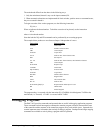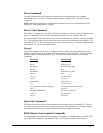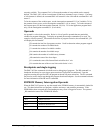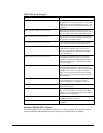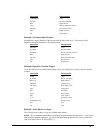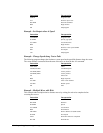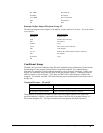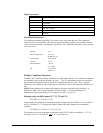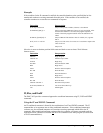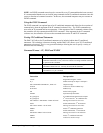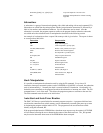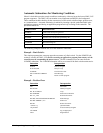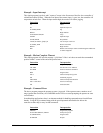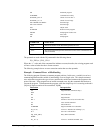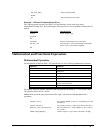
120 • Chapter 7 Application Programming DMC-3425
Logical operators:
OPERATOR DESCRIPTION
< less than
> greater than
= equal to
<= less than or equal to
>= greater than or equal to
<> not equal
Conditional Statements
The conditional statement is satisfied if it evaluates to any value other than zero. The conditional
statement can be any valid DMC-3425 numeric operand, including variables, array elements, numeric
values, functions, keywords, and arithmetic expressions. If no conditional statement is given, the jump
will always occur.
Number V1=6
Numeric Expression V1=V7*6
@ABS[V1]>10
Array Element V1<Count[2]
Variable V1<V2
Internal Variable _TPA=0
_TVA>500
I/O V1>@AN[2]
@IN[1]=0
Multiple Conditional Statements
The DMC-3425 will accept multiple conditions in a single jump statement. The conditional statements
are combined in pairs using the operands “&” and “|”. The “&” operand between any two conditions,
requires that both statements must be true for the combined statement to be true. The “|” operand
between any two conditions, requires that only one statement be true for the combined statement to be
true.
NOTE: Each condition must be placed in parentheses for proper evaluation by the controller. In
addition, the DMC-3425 executes operations from left to right. For further information on
Mathematical Expressions and the bit-wise operators ‘&’ and ‘|’, see pg.
5127.
Example using variables named V1, V2, V3 and V4:
JP #TEST, (V1<V2) & (V3<V4)
In this example, this statement will cause the program to jump to the label #TEST if V1 is less than V2
and V3 is less than V4. To illustrate this further, consider this same example with an additional
condition:
JP #TEST, ((V1<V2) & (V3<V4)) | (V5<V6)
This statement will cause the program to jump to the label #TEST under two conditions; 1. If V1 is
less than V2 and V3 is less than V4. OR
2. If V5 is less than V6.



